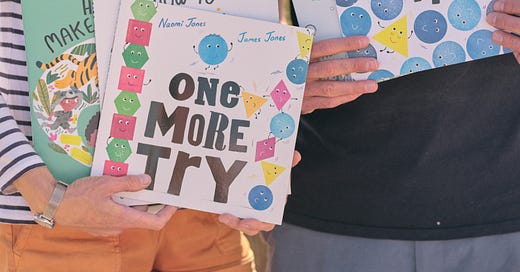Between us we have over 35 years working in the publishing industry at big corporate publishers and smaller indie presses.
Understanding how the industry works was incredibly helpful when we became a published author and illustrator.
But the single biggest thing that made a difference was realising that first and foremost, publishing is a business.
What does that mean for authors and illustrators?
Publishing is a business and businesses only function if they make a profit. You could have created the most beautiful book in the world, but that might not be enough to ensure publication because…
…agents and editors are all looking to acquire books that will sell a lot of copies and make money. As a foreign editor once told me in Bologna when I asked what sort of books they were looking for - everyone wants bestsellers.
Before a book is acquired, representatives from all departments meet at an acquisitions meeting to discuss it. If the numbers don’t stack up, it is unlikely an offer will be made. (You can read more about what happens at an acquisitions meeting and what considerations are made here.)
Considering the commercial appeal of your book when writing/illustrating it could make a real difference when seeking representation and a book deal, especially when trying to stand out in a competitive market. You want to make it easy for publishers to buy and sell your book.
Market research is really important. Is your story the right length? Are your illustrations similar to those being published at the moment? Where would your book sit on a bookshelf? We’ve written more about this here.
Publishing is an industry full of people who love books. But they have their own internal targets and often, extremely large workloads. It’s not always the best paid industry either, especially when starting out. It can take time to hear back from editors / agents / designers etc simply because of how busy they are. Knowing this can help waiting creatives realise a delay isn’t personal.
As we’ve said before, knowledge is power. Understanding how the money works in publishing is really important. This means advances and royalties…
…it also means subsidiary rights income. This is a huge area and one that we’ll dive into more in a future post. But one of the things we are mindful of when creating new work is its international appeal. For example different countries prefer different art styles.
It’s important to remember that the market changes. Trends come in and out of fashion. Predicting these is not an exact science.
All of this means that rejections - whether from an agent or editor - are often not personal. (Although we know they can feel like it.) They might have a book just like yours on their list already, or maybe they’re looking for something specific following an internal strategy meeting. A rejection isn’t always about you and your work, sometimes it really is about them.
Understanding how the industry works can really help when trying to get published and it is definitely worth considering your book’s commercial appeal, place in the market etc when preparing to submit to an agent/editor.
But…
Don’t focus so hard on following trends or trying to create something commercial that you loose the very essence of your story/art.
Firstly, that way madness lies.
Secondly, publishing moves so very slowly that if you see a bandwagon, you’re already too late.
Instead spend time and energy developing your craft and making your story and/or illustrations as good as possible. After all, the more you do anything, the better you become at it.
It’s also important to listen to your gut - to tell the stories and paint the pictures that make your soul sing. That’s where the magic happens. That’s what makes it art.
Finally we want to leave you with the reminder that publishers don’t know everything.
When James’s designed the front cover for The Tiger’s Wife by Téa Obreht, he was told that ‘yellow covers don’t sell’. The Tiger’s Wife (with its yellow cover) went on to win the Orange Award and became a New York Times Bestseller.
That’s one of the things I love about publishing. Despite the fact it is a business, full of very talented people making decisions based on their experience, educated guesswork and instinct - they never really know how well a book will do.
There will always be books that surpass expectations and become bestsellers, whether because of luck, timing or because they simply tell a captivating story.
There’s a kind of magic in that too.
If reading this has resonated with you, please do click the like button and share it with friends as it will help more people discover our substack.
This post was free today but most of our Monday posts are for members of our Words and Pictures community. It costs just £5 a month to subscribe which gives you access to all our posts and you can join us for a live chat once a month to ask any questions you might have.
Naomi & James x
Why subscribe to Words and Pictures?
We’ll share everything we know about making books and how the industry works in a new post each Monday.
Every month we’ll hold a live session for community members to ask us anything and everything they want to know about writing, illustrating and getting published. The next live session is Sunday 23rd Feb 8pm GMT.
There will also be free interviews every Friday with authors, illustrators and publishing professionals as they spill the ink about life behind the scenes making books.
Every month we’ll also highlight submission opportunities and exciting new releases in the world of children’s books.






